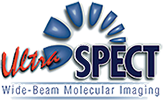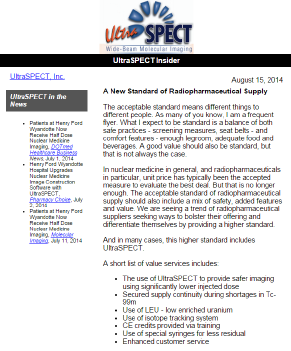 Delivering a New Standard for Nuclear Medicine
Delivering a New Standard for Nuclear Medicine
The acceptable standard means different things to different people. As many of you know, I am a frequent flyer. What I expect to be standard is a balance of both safe practices – screening measures, seat belts – and comfort features – enough legroom, adequate food and beverages. A good value should also be standard, but that is not always the case.
In nuclear medicine in general, and radiopharmaceuticals in particular, unit price has typically been the accepted measure to evaluate the best deal. But that is no longer enough. The acceptable standard of radiopharmaceutical supply should also include a mix of safety, added features and value. We are seeing a trend of radiopharmaceutical suppliers seeking ways to bolster their offering and differentiate themselves by providing a higher standard.
And in many cases, this higher standard includes UltraSPECT.
A short list of value services includes:
- The use of UltraSPECT to provide safer imaging using significantly lower injected dose
- Secured supply continuity during shortages in Tc-99m
- Use of LEU – low enriched uranium
- Use of isotope tracking system
- Provide CE credits Use of special syringes for less residual
- Enhanced customer service
More and more customers are appreciating and realizing the significance of these added value services. And at the same time, suppliers are including one – and typically several – of the above value added services to remain competitive.
We at UltraSPECT have already started collaborating with several radiopharmaceutical suppliers and we look forward to working with more. The shift from just being a radio pharmaceutical suppler to now being low-dose providers should be the new and only standard for nuclear medicine.
Best regards,
Yossi
UltraSPECT in the News
- Patients at Henry Ford Wyandotte Now Receive Half Dose Nuclear Medicine Imaging, DOTmed Healthcare Business News, July 1, 2014
- Henry Ford Wyandotte Hospital Upgrades Nuclear Medicine Image Construction Software with UltraSPECT, Pharmacy Choice, July 2, 2014
- Patients at Henry Ford Wyandotte now receive half-dose nuclear medicine imaging, Molecular Imaging, July 11, 2014
Low Dose News
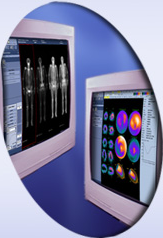 As we enter an era of empowered, engaged patients seeking out information, educating themselves and developing a greater role in their personal health decisions, the time for radiation dose reduction in medical imaging could not be more pertinent.
As we enter an era of empowered, engaged patients seeking out information, educating themselves and developing a greater role in their personal health decisions, the time for radiation dose reduction in medical imaging could not be more pertinent.
In our quest to deliver low dose imaging to the industry, we have come across a number of methods and technologies that radiopharmaceutical suppliers, hospitals, practices and imaging centers have leveraged to reduce the radiation exposure to patients. In this month’s newsletter, we’d like to take a moment to ask:
How are you working towards lowering dose in nuclear medicine imaging?
We appreciate your responses, which can be sent via a reply to this email. Thank you!
Partnership Update
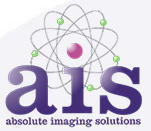 Through its nationwide agreement with UltraSPECT, Absolute Imaging SolutionsTM (AIS) delivers the benefits of significantly reduced radiation dose and shortened scan times to their customers across the country. Absolute Imaging SolutionsTM, founded in 2001, is a leading service and equipment provider for medical imaging systems and offers high quality service and support, with a comprehensive guarantee on everything they do.
Through its nationwide agreement with UltraSPECT, Absolute Imaging SolutionsTM (AIS) delivers the benefits of significantly reduced radiation dose and shortened scan times to their customers across the country. Absolute Imaging SolutionsTM, founded in 2001, is a leading service and equipment provider for medical imaging systems and offers high quality service and support, with a comprehensive guarantee on everything they do.
The combination of UltraSPECT’s portfolio of advanced reconstruction systems, paired with the cardiac SPECT cameras provided by AIS, enable nuclear medicine departments to provide a higher-quality, safer standard of imaging for their patients.
To learn more about Absolute Imaging Solutions™, click here.
5 Questions with Meg Imig
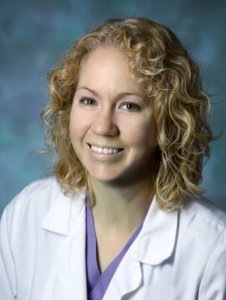 Meet the experienced team behind UltraSPECT. This month we introduce you to Meg Imig, a Certified Nuclear Medicine Technologist with more than 12 years of clinical experience, who leverages her expertise to train and consult end users of UltraSPECT, as the company’s Clinical Product Specialist.
Meet the experienced team behind UltraSPECT. This month we introduce you to Meg Imig, a Certified Nuclear Medicine Technologist with more than 12 years of clinical experience, who leverages her expertise to train and consult end users of UltraSPECT, as the company’s Clinical Product Specialist.
What is your history in the Nuclear Medicine field?
I have been involved in Nuclear Medicine since the spring of 2002. I remember entering the job market and finding it to be an extremely interesting field. When I began my career, I was a junior technologist in a Nuclear Medicine program within a teaching hospital. After the working there, I spent a few years working in an outpatient clinic before returning to a teaching hospital, this time in the role of a senior technologist.
I was in that role for a little over four years before I joined UltraSPECT. At UltraSPECT, I’m essentially a walking and talking applications manual – I do anything and everything related to applications, from troubleshooting to training. Recently, I’ve also had the training process approved by SNMMI to offer CE credit for customers, which helps contribute to fulfilling the continued education requirements for Nuclear Medicine Technologists.
What is one of the most important things you’ve learned in your years of experience?
Network, network, network. As a technologist, it is incredibly important to network and become active in professional societies and associations. You should begin during your time as a student and continue from then on. I was very involved in the student education committee during my years as a junior technologist and have eventually became active in the mid-eastern chapter of SNMMI.
The benefits of networking are endless. In Nuclear Medicine, for example, you never know when you may need another technologist’s opinion or the general support of the colleagues sharing your field. It is extremely important to have individuals you can connect with on a professional level when in need of additional perspectives. Personally, I deeply value knowing I can reach out to a past colleague when I need an opinion, guidance or simply another point of view.
What are some of the rewarding aspects of your work?
First, it is very rewarding to see the results of my work eventually contribute to the benefit of patients. It is truly a great feeling to come to a facility and provide training on UltraSPECT solutions which can offer safer Imaging with lower radiation exposure, a faster scan time, or both. Regardless the equipments type, I have been able to train and qualify many Nuclear Medicine imaging labs to adapt safer imaging and increase their diagnostic quality.
Taking a step back, the experience of sharing my knowledge is also quite rewarding – it’s one of the things I enjoy most about what I do. My mother was a teacher, yet I’d have never believed for a second that I would wind up spending most of my time teaching new technology as well. Apparently, it’s in my DNA – I’ve been teaching since my first day in clinic. I would never have pegged myself for a public speaker but it is essentially all I do now. From technologists and administrators to patients and more, educating people on UltraSPECT’s solutions and safer Nuclear Medicine practices, has been quite gratifying.
What are some of the changes you've observed taking place in Nuclear Medicine?
I believe a number of changes have taken place over the course of the last decade or so. As we can see across the healthcare industry, patients’ awareness of radiation is increasing– and continues to become more prevalent. Something that has been difficult to wrap our minds around in Nuclear Medicine is the fact that there are new technologies and solutions available that now allow us to change the way we do things. Part of my job has been to enlighten those in our industry to adapt UltraSPECT’s solution to provide safer imaging with much less radiation, shorter scan times and higher quality images.
One of the biggest differences between when I began my career and now, would be the shortages in radiopharmaceutical isotopes currently felt in Nuclear Medicine. Two of the biggest generators are in Canada and the Netherlands. Occasionally, they go down for quality control, or preventative maintenance, which can be for periods lasting up a few weeks or more. Sometimes, there is an overlap in the timing for both generators undergoing quality control – and when the two biggest generators are producing isotopes at the same time, the industry faces shortage issues. UltraSPECT’s technology can play great role in coping with such shortages.
What do you enjoy doing most in your free time?
Like anyone else, I mostly enjoy spending time with my friends and family – and also my ever-faithful puppy, Zoey. She is a Beagle-German shepherd mix and I have had her since 2005. One of her favorite things to do is swim, so the highlights of our summer are whenever I take her to the beach. We usually go to a place in northern Virginia with a giant dog park and something of a mini-lagoon. She’s my little fish!

